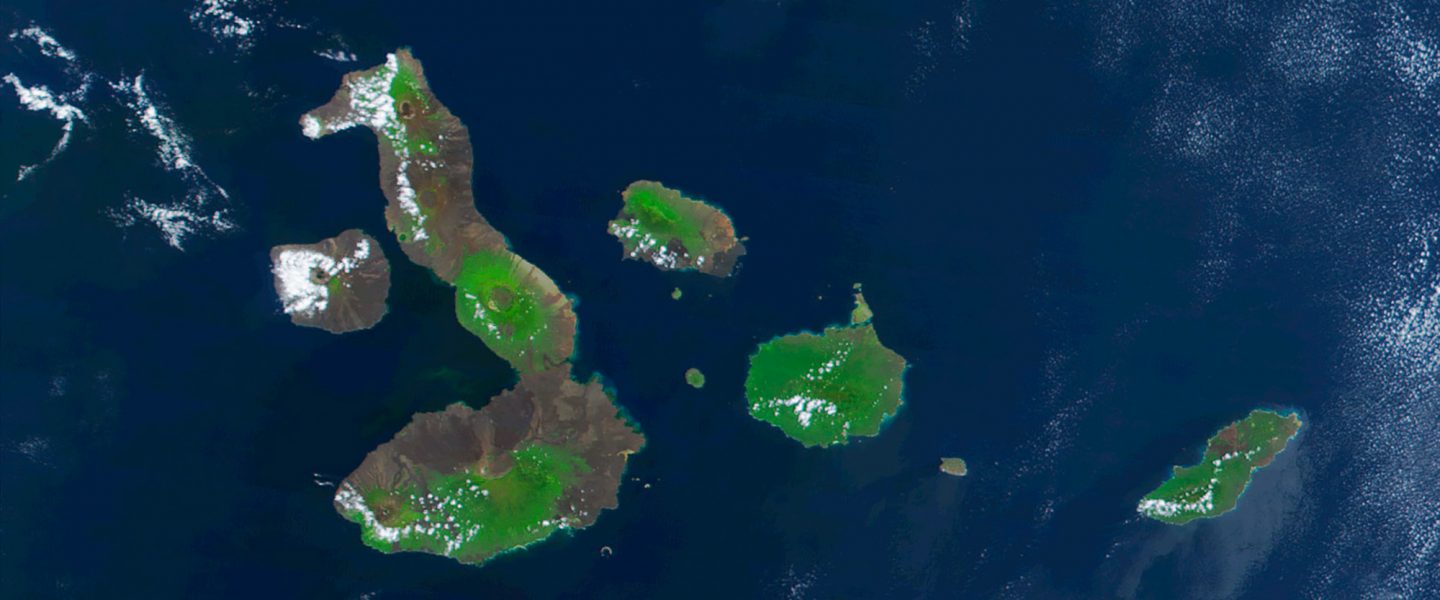The Galapagos Islands are in the line of an icy current that provides food and shelter in a warming ocean, but this might not last for long.
|
Listen To This Story
|
Pushed by climate change, almost every part of the ocean is heating up. But off the west coast of the Galapagos Islands, there is a patch of cold, nutrient-rich water. This prosperous patch feeds phytoplankton and breathes life into the archipelago.
“The cool water sustains populations of penguins, marine iguanas, sea lions, fur seals, and cetaceans that would not be able to stay on the equator year round,” says Judith Denkinger, a marine ecologist at the Universidad San Francisco de Quito in Ecuador.
Over the past four decades, this cold patch has cooled by roughly half a degree. Its persistence has scientists wondering how long it will hold. The Galapagos Islands are already famed for their biodiversity. Could it be that the water offshore will become a refuge for marine animals seeking cold water in a warming world? The answer, it seems, is yes. At least for a while.
There are other cold pools on the planet. One, in the North Atlantic just south of Greenland, is caused by the weakening of a global current that carries heat north. But according to a new study led by Kris Karnauskas and Donata Giglio, climate scientists at the University of Colorado, Boulder, the Galapagos cold pool is a product of the shape of the seafloor and the rotation of the planet — two things unlikely to change because of rising greenhouse gases. And the Galapagos are not the only islands seeing this effect.
Along the equator, several islands have unusually cold water lying immediately to their west. According to Karnauskas and Giglio’s work, this cooling is the product of upwelling caused by the collision of a deep ocean current against the islands lying in its path.
Analyzing 22 years’ worth of ocean temperature data collected by Argo floats, along with observations from satellites, ocean gliders, and cruises, the scientists constructed temperature profiles around several equatorial islands and pinpointed the location of the Equatorial Undercurrent (EUC), a cold, fast-flowing current that travels eastward about 100 meters (~328 feet) below the surface of the Pacific Ocean. The EUC is held in place along the equator by the Coriolis force, an inertia brought on by the Earth’s spin on its axis. This same effect twists hurricanes anticlockwise north of the equator and clockwise south of it.
Karnauskas and Giglio’s work shows that when the EUC gets within 100 kilometers (~62 miles) west of the Galapagos Islands, it suddenly intensifies as it’s diverted upward by the islands. This causes the water to be up to 1.5 C (2.7 F) cooler than the water outside this cold pool. The researchers found a similar, yet weaker, effect west of the Gilbert Islands in the western Pacific Ocean.
In a separate study, Karnauskas shows that over the past few decades, the EUC has been getting stronger and deeper. It’s also moved about 10 kilometers (~6 miles) south, bringing its path more in line with the Galapagos Islands. All of those changes contribute to the observed cooling, says Karnauskas.
For the Galapagos marine ecosystem, this cooling is “a bit of a mixed bag,” says Jon Witman, a marine ecologist at Brown University in Rhode Island who was not involved in the studies. “The cool upwelled water of the EUC certainly has important positive impacts,” he says. But when combined with other oceanic processes that also cause temperatures to drop, such as La Niña, the cooling can hurt certain wildlife, such as by cold shocking corals, causing them to bleach and sometimes die.
For the near future, this shield of cold will likely benefit life around the Galapagos Islands and other equatorial islands. But this cooling water is fighting a losing battle with a warming atmosphere, says Karnauskas. “This cooling trend probably won’t last through the century; it will eventually be overwhelmed,” he says.
If some species are protected at least for a while, however, the Galapagos could become a genetic bank that could be used to reseed devastated marine ecosystems elsewhere, suggests Karnauskas. “And it’s just beautiful that it’s the iconic Galapagos that we’re talking about here.”





